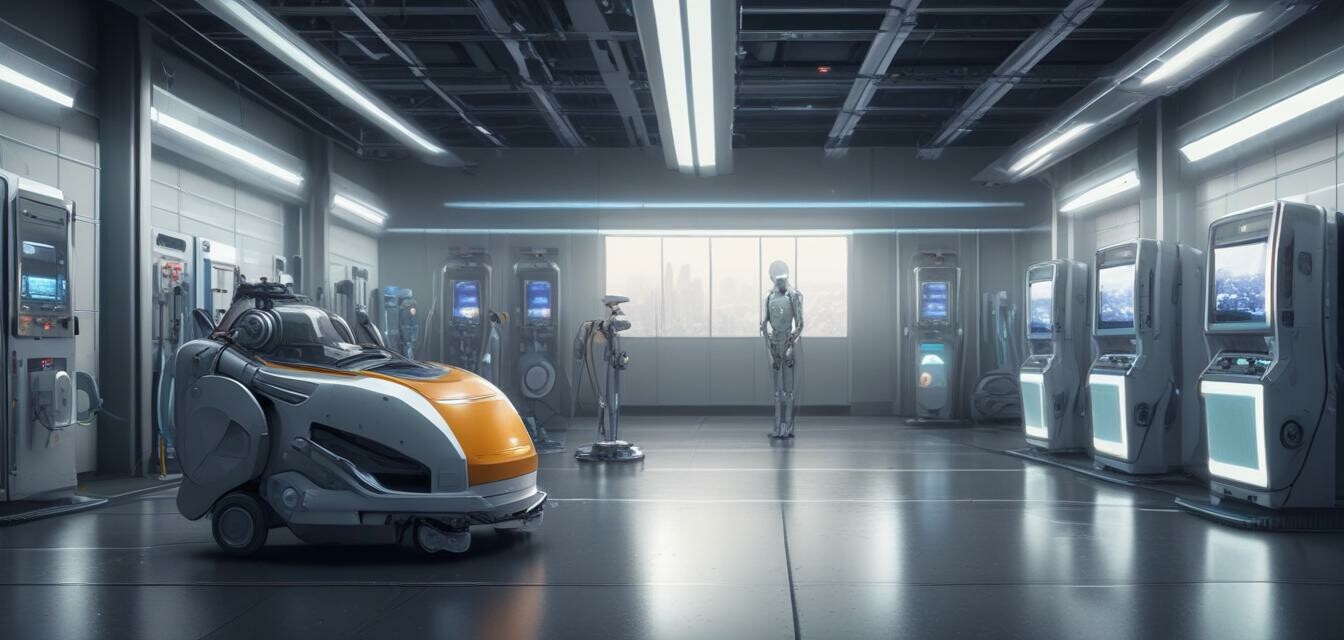
This article was generated using AI and is based on real customer reviews from the Amazon platform. It contains affiliate links, meaning we may earn a commission—at no extra cost to you. As Amazon Associates, we earn from qualifying purchases.
The Impact of AI on Cleaning Equipment in 2025
Key Takeaways
- AI technology is transforming cleaning equipment through automation and enhanced performance.
- Future cleaning machines will focus on efficiency, adaptability, and connectivity.
- Current trends forecast greater user interaction and data-driven insights in cleaning gear.
- Investments in smart cleaning solutions are expected to rise, driven by commercial and industrial demand.
Artificial Intelligence (AI) is revolutionizing various industries, and cleaning is no exception. By 2025, the impact of AI on cleaning equipment will be profound, changing the way we approach industrial cleaning and floor care. This article discusses how AI is influencing cleaning technology, highlighting specific advancements and what the future holds.
Current advancements in AI-driven cleaning technology
The integration of AI into cleaning equipment has led to significant improvements in functionality and efficiency. Below are some notable advancements:
| Technology | Description | Impact |
|---|---|---|
| Robotic Cleaners | Autonomous machines that navigate and clean spaces using AI algorithms. | Increased productivity and reduced labor costs. |
| Smart Sensors | Devices that detect dirt levels and adjust cleaning intensity accordingly. | Enhanced cleaning performance and resource efficiency. |
| Data Analytics | Software that collects cleaning performance data for future analysis. | Improved operational strategies and preventive maintenance setups. |
How AI is enhancing equipment performance
The following AI advancements are shaping more efficient cleaning systems:
- Elevated Cleaning Precision: AI enables machines to identify the best cleaning methods based on surface type and dirt level.
- Automated Scheduling: Cleaning machines can now be programmed to operate during off-hours, ensuring readiness during peak usage times.
- Remote Monitoring: Users can now oversee cleaning operations via mobile applications and dashboards, improving user experience significantly.
Future trends in AI cleaning solutions
As we look towards 2025, several trends are emerging in the realm of AI cleaning technologies:
- Increased interconnectivity: Smart machines will be able to communicate with each other for synchronized operations.
- Greater energy efficiency: Future machines will utilize AI to minimize energy consumption while maximizing performance.
- Advanced learning capabilities: Machines will learn from past cleaning sessions, optimizing future performance automatically.
Tips for choosing AI-enabled cleaning equipment
- Assess your cleaning needs and environment.
- Research different brands for reputation and service support.
- Look for models with good reviews on efficiency and usability.
- Evaluate the long-term ROI based on maintenance costs and energy efficiency.
- Don’t hesitate to ask for demonstrations before a final decision.
Conclusion
The incorporation of AI in heavy duty cleaning equipment is just beginning to scratch the surface of its potential. As we move toward 2025, we can expect even more innovative solutions that enhance cleaning performance and operational efficiency across various industries. Embracing these advancements, from industrial vacuums to floor scrubbers, will undoubtedly redefine how we think about cleaning equipment.
Pros
- Increased efficiency and productivity through automation.
- Enhanced cleaning precision and effectiveness.
- Reduced labor and maintenance costs.
- Data-driven insights for improved operational strategies.
Cons
- Initial investment costs can be high.
- Dependence on technology may pose risks if systems fail.
- Training may be needed for staff to operate new technology effectively.
Staying up-to-date with the latest advancements in heavy-duty cleaning solutions is crucial for maximizing the benefits of these innovations. For more information, check out our other articles on buying guides and tips and tricks to further enhance your cleaning strategies.
In conclusion, the impact of AI on cleaning equipment is poised to be transformative as we head into 2025. Understanding these changes will help users make informed decisions and stay ahead of the curve in the ever-evolving landscape of cleaning technologies.